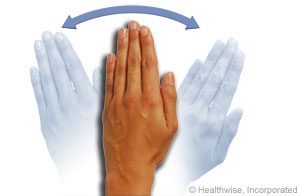So often I stand in front of a group of workers who have been encouraged to attend the workplace Ergonomics Training session. Their expectations are often very low. They wonder, how much is there to say about the arrangement of your keyboard, mouse and screen/s? I’m pleased to say, that I generally finish the session with a queue of people wanting to talk to me about their particular concerns and how their workstation might be optimised. So let’s look at just one of the frequently asked questions… Which mouse might help my wrist and hand pain?
No one is holding out and depriving you of the perfect mouse. Generally, a standard mouse is just fine but first consider, does it fit your hand? The mouse should fill the palm of your hand allowing relaxed fingers. The weight of your hand should be sufficient to move the mouse. You should not need to grip the mouse between ‘pinky’ and thumb. If your hand is not relaxed over the mouse then you need a larger mouse and the Logitech MX Master is a good example of a mouse that better fits a larger or masculine hand.
What mouse speed have you got set? Yes that’s right, the navigation speed can be changed. The default setting is usually suited to a single screen. If you have 2 large screens, you do a lot more wrist deviation from left to right and this can be a significant factor in the development of overuse conditions of the wrist and hand, such as Carpal Tunnel Syndrome. Go to Control Panel > Mouse > Pointer Options > and increase the pointer speed in order to reduce the amount of wrist deviation required. This alone can sometimes overcome wrist pain.
Do I need a mouse wrist rest? Generally, no. The wrist works best in slight extension. Look at your hand when you grasp a cup and you will see the natural wrist angle. If you place a gel lump beneath the wrist the natural wrist position is changed and this is even more the case with a minimalist-style mouse. Furthermore, the wrist rest tends to increase wrist movement and reduce whole of arm movement. If like many people, you prefer the softness of the gel, then use a spongy, flat mouse pad under your wrist and forearm. This offers both the soft contact as well as the optimal wrist position.
There certainly are other mouse options which can indeed benefit particular musculoskeletal conditions of the wrist, hand, elbow and shoulder and an individual workstation assessment is recommended in those cases.
So you can see there’s more to the story of workstation ergonomics and we’ve only looked briefly at the mouse. If you’d like more information regarding workstation ergonomics, please contact Back on Track. We love helping people and you’d be amazed at how a short education session can positively influence worker comfort and health.

